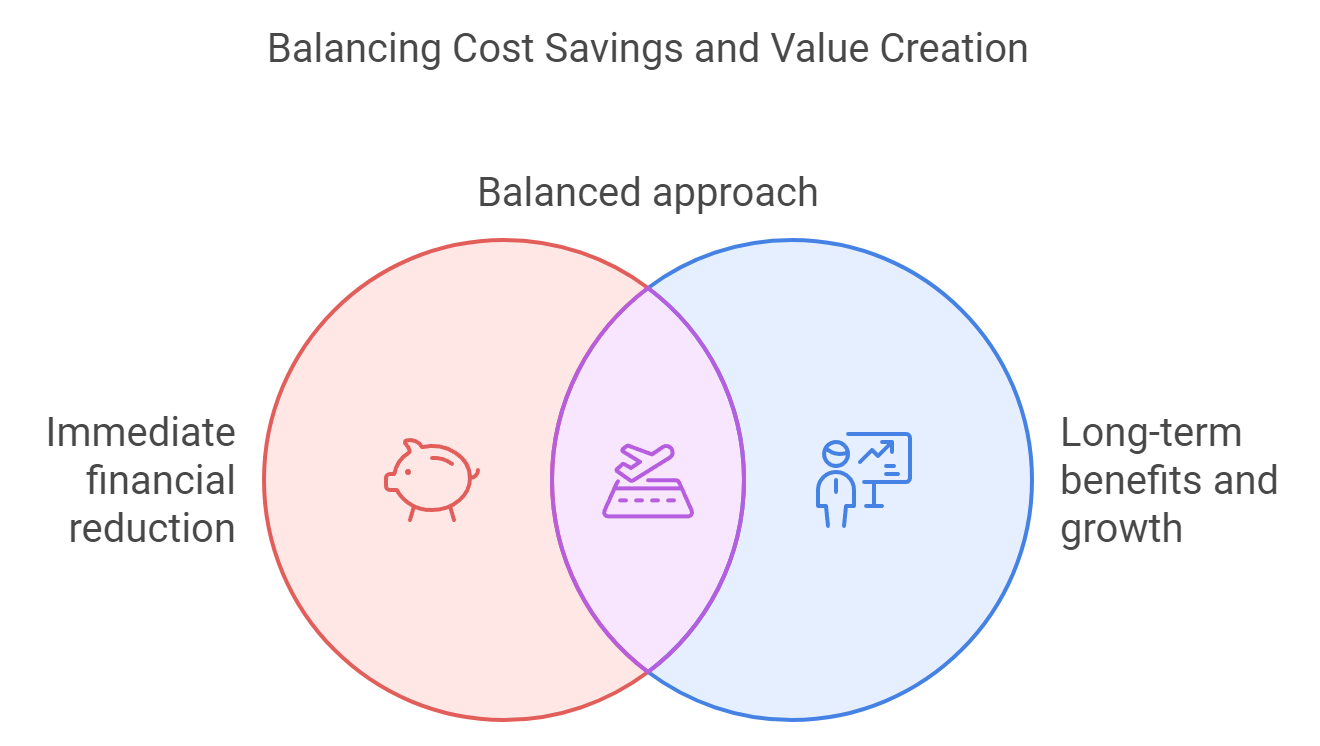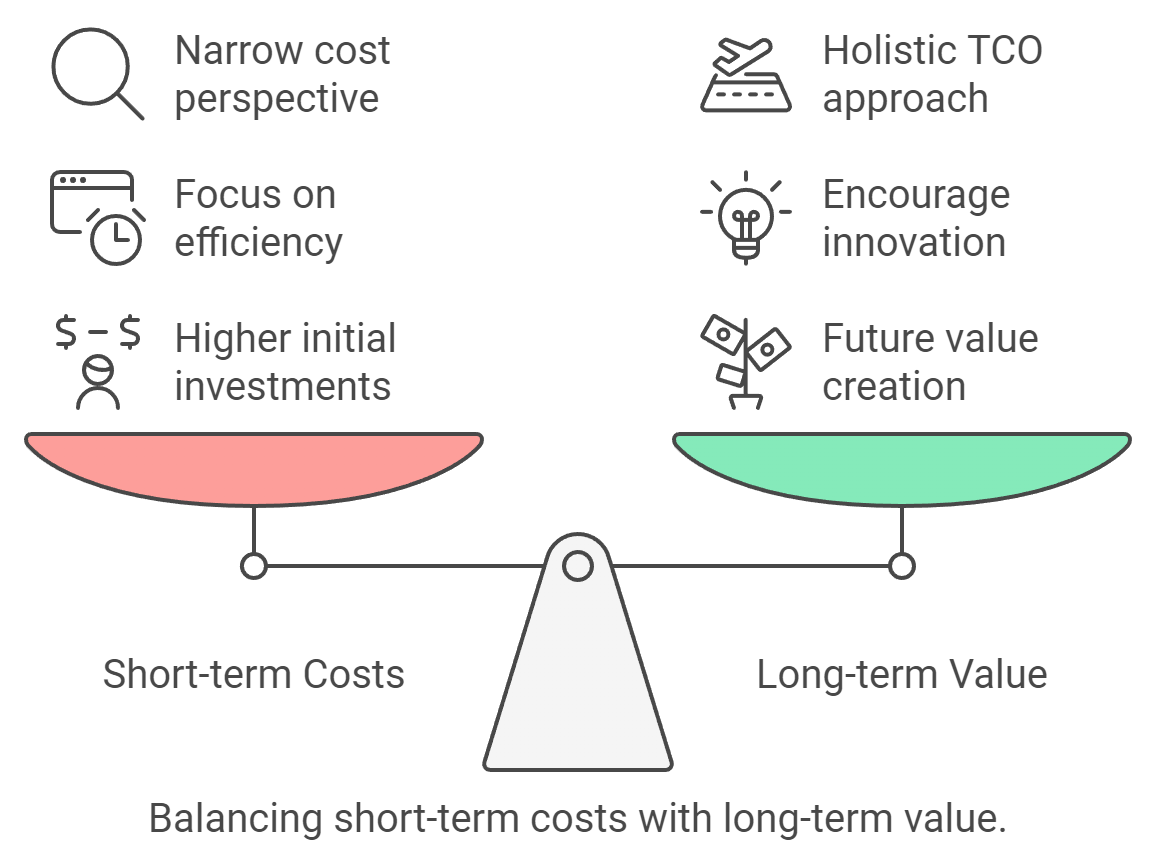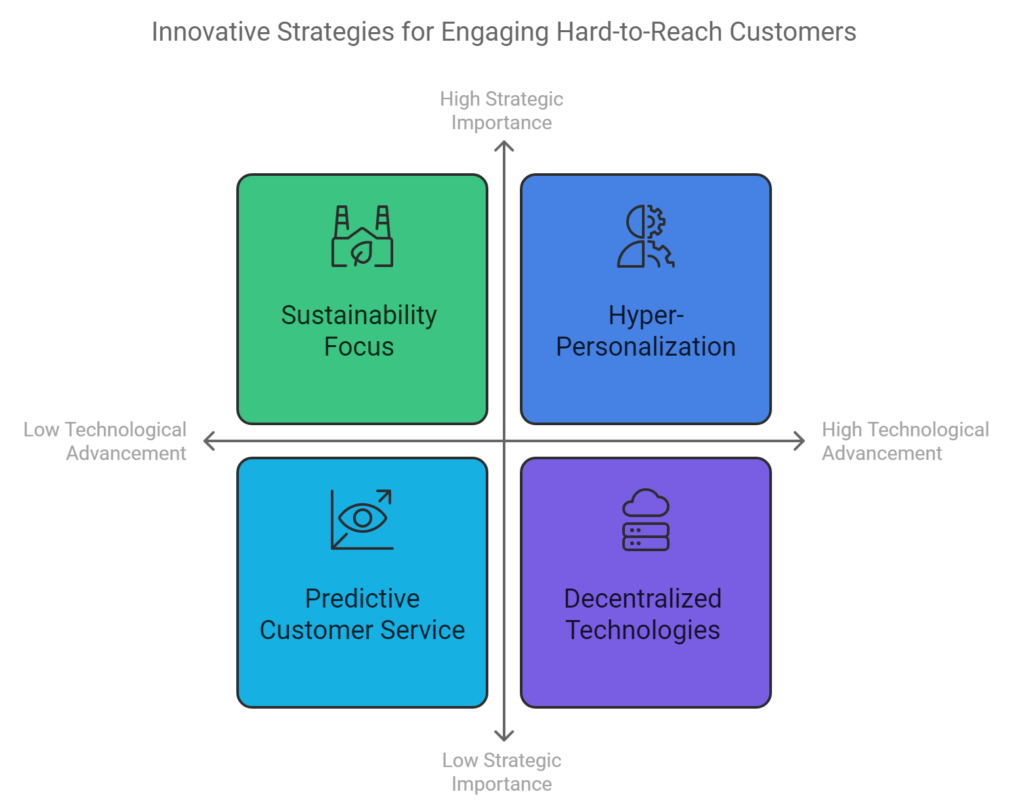
In today’s competitive business landscape, companies often face the dilemma of choosing between cost-saving measures and value creation strategies. This choice becomes particularly crucial when deciding whether to pursue hard-to-reach customers or focus on easily automated processes. While the allure of immediate cost savings is strong, overlooking the potential value of challenging customer segments can be a false economy. This article explores the interplay between cost savings and value creation, with a focus on the strategic advantages of targeting hard-to-reach customers.
Understanding Cost Savings vs. Value Creation
Before delving into the benefits of pursuing challenging customer segments, it’s essential to understand the fundamental differences between cost savings and value creation:
Definitions
- Cost Savings: Measures taken to reduce expenditures without compromising the quality or quantity of goods or services. It focuses on immediate financial benefits, often through efficiency improvements or cutting unnecessary expenses.
- Value Creation: Broader benefits that an organization gains from its activities, including improved quality, innovation, customer satisfaction, and strategic partnerships. Value creation is more about the long-term benefits that contribute to the overall success and sustainability of the organization.
Key Differences
| Aspect | Cost Savings | Value Creation |
|---|---|---|
| Focus | Immediate financial reduction | Long-term benefits and growth |
| Measurement | Quantifiable in monetary terms | Often qualitative; harder to quantify |
| Approach | Tactical (short-term) | Strategic (long-term) |
| Impact on Innovation | Can stifle innovation if overly emphasized | Encourages innovation and quality improvement |
| Supplier Relationships | Often transactional | Focuses on partnerships and collaboration |

The Strategic Value of Pursuing Hard-to-Reach Customers
While it may be tempting to focus solely on easily automated processes and readily accessible customer segments, targeting hard-to-reach customers can offer significant strategic advantages:
- Market Differentiation: By offering tailored solutions to underserved segments, companies can carve out unique niches, setting themselves apart from competitors who may overlook these opportunities.
- Higher Profit Margins: Less competition in hard-to-reach markets often allows for premium pricing, resulting in better profit margins compared to mainstream, price-sensitive markets.
- Building Stronger Relationships: Engaging with challenging customer segments fosters deeper, more personalized relationships, leading to increased loyalty and long-term partnerships.
- Enhanced Customer Insights: Understanding the needs of niche markets can drive innovation and inform product development strategies that may eventually resonate with broader audiences.
- Increased Return on Investment (ROI): Targeted marketing campaigns for specific hard-to-reach segments can yield higher conversion rates and lower customer acquisition costs over time.
- Opportunity for Growth: Successfully serving hard-to-access customers can unlock new revenue streams and adjacent market opportunities.
Balancing Cost Savings and Value Creation
The pursuit of hard-to-reach customers exemplifies the delicate balance between cost savings and value creation:
- Short-term Costs vs. Long-term Value: While targeting these segments may require higher initial investments, the long-term value creation potential often outweighs the immediate costs.
- Innovation vs. Efficiency: Focusing solely on cost-cutting and easily automated processes can stifle innovation. Pursuing challenging customers encourages creative problem-solving and drives overall business innovation.
- Holistic Approach: Adopting a Total Cost of Ownership (TCO) perspective allows businesses to consider all costs and benefits associated with serving different customer segments over time, leading to more balanced decision-making.
- Leveraging Technology: Investments in data analytics and customer relationship management tools can enhance both cost-saving measures and value creation strategies, making it easier to serve hard-to-reach customers efficiently.

Main Challenges in Balancing Cost Savings and Value Creation
While the benefits of pursuing hard-to-reach customers are clear, there are several challenges in balancing cost savings and value creation:
- Resource Allocation: Determining how to distribute limited resources between cost-saving initiatives and value-creation efforts.
- Short-term Pressure: Balancing short-term financial goals with long-term value creation strategies.
- Measurement Difficulties: Value creation often yields intangible benefits that are harder to quantify than cost savings.
- Organizational Resistance: Overcoming internal resistance to change, especially when shifting from a cost-focused to a value-creation mindset.
- Market Uncertainty: Predicting the long-term value of hard-to-reach customer segments in volatile markets.
Measuring Success in Targeting Hard-to-Reach Customers
To effectively gauge the success of efforts to reach challenging customer segments, companies can use the following metrics:
- Customer Lifetime Value (CLV): Measure the total value a customer brings over their entire relationship with the company.
- Net Promoter Score (NPS): Track customer loyalty and likelihood to recommend the company.
- Market Share Growth: Monitor increases in market share within the targeted hard-to-reach segment.
- Innovation Metrics: Track new products or services developed as a result of insights gained from hard-to-reach customers.
- Retention Rates: Measure the percentage of hard-to-reach customers retained over time.
- Profitability per Customer: Compare the profitability of hard-to-reach customers against more accessible segments.
- Return on Investment (ROI): Calculate the return on resources invested in targeting hard-to-reach customers.
Innovative Strategies for Engaging Challenging Customer Segments
- Co-creation Initiatives: Involve hard-to-reach customers in product development processes to ensure solutions meet their specific needs.
- Personalized Technology Solutions: Develop customized digital platforms or apps that cater to the unique requirements of challenging segments.
- Community Building: Create exclusive communities or forums for hard-to-reach customers to foster engagement and gather insights.
- Strategic Partnerships: Collaborate with organizations that already have established relationships with the target segment.
- Localized Micro-marketing: Develop highly targeted, local marketing campaigns that resonate with specific hard-to-reach groups.
- Flexible Service Models: Implement adaptable service delivery methods to accommodate the varying needs of challenging customers.

Influence on Overall Market Positioning
Pursuing hard-to-reach customers can significantly impact a company’s market positioning:
- Differentiation: Establishes the company as an innovative problem-solver willing to tackle complex challenges.
- Expertise Development: Builds specialized knowledge and capabilities that can be leveraged across other market segments.
- Brand Perception: Enhances the brand image as customer-centric and adaptive to diverse needs.
- Market Expansion: Opens doors to new markets or adjacent customer segments previously considered inaccessible.
- Competitive Advantage: Creates barriers to entry for competitors who may not have the expertise or willingness to serve these segments.
Real-World Examples
- GE Healthcare in Rural India: Developed portable, low-cost ECG machines for rural areas, leading to new product lines and market expansion.
- M-Pesa in Kenya: Vodafone’s mobile payment system reached unbanked populations, revolutionizing financial services in developing countries.
- Amazon’s Delivery Lockers: Addressed the needs of urban dwellers without secure delivery options, expanding Amazon’s reach in dense city centers.
Strategic Framework for Balancing Cost Savings and Value Creation
- Assess Current Position: Evaluate existing customer segments and their profitability.
- Identify Opportunities: Pinpoint underserved or hard-to-reach segments with growth potential.
- Analyze Resource Requirements: Determine the investments needed to target these segments effectively.
- Develop Tailored Strategies: Create customized approaches for each identified hard-to-reach segment.
- Implement and Monitor: Roll out strategies and continuously track performance using defined metrics.
- Iterate and Optimize: Regularly review and adjust strategies based on outcomes and changing market conditions.
Future Trends
- Hyper-Personalization: Increasing use of AI to create highly personalized experiences for niche customer segments.
- Sustainability Focus: Growing importance of sustainable practices in reaching and serving challenging customer segments.
- Collaborative Ecosystems: Rise of partnership networks to collectively serve hard-to-reach markets.
- Decentralized Technologies: Emergence of blockchain and decentralized systems to overcome infrastructure limitations in underserved areas.
- Predictive Customer Service: Use of advanced analytics to anticipate and address the needs of hard-to-reach customers proactively.

Call to Action
- Evaluate your current customer segmentation strategy. Are there underserved or hard-to-reach segments you’ve overlooked?
- Assess your balance between cost-saving initiatives and value creation efforts. Are you sacrificing long-term opportunities for short-term gains?
- Consider piloting a project targeting a specific hard-to-reach customer segment, using the strategies and metrics outlined in this article.
- Engage with your team to brainstorm innovative ways to leverage technology in reaching challenging customer segments.
- Review your company’s long-term strategy and consider how pursuing hard-to-reach customers aligns with your overall market positioning and growth objectives.
By taking these steps, you can begin to unlock the potential of hard-to-reach customers and position your business for sustainable success in an increasingly competitive global market.
Conclusion
While cost savings are essential for maintaining profitability, value creation is critical for driving growth and innovation. The pursuit of hard-to-reach customers embodies this principle, offering a path to differentiation, higher margins, and long-term success.
Effective business strategies should aim for a balance between immediate financial benefits and long-term value creation. By investing in the capabilities needed to serve challenging customer segments, companies can position themselves for sustainable growth, enhanced market positioning, and increased resilience in competitive markets.
In an era where automation and efficiency are prevalent, the ability to effectively engage with hard-to-reach customers can become a significant competitive advantage. It’s not just about expanding market share; it’s about strategically positioning a business for long-term success and sustainability in an ever-evolving business landscape.

